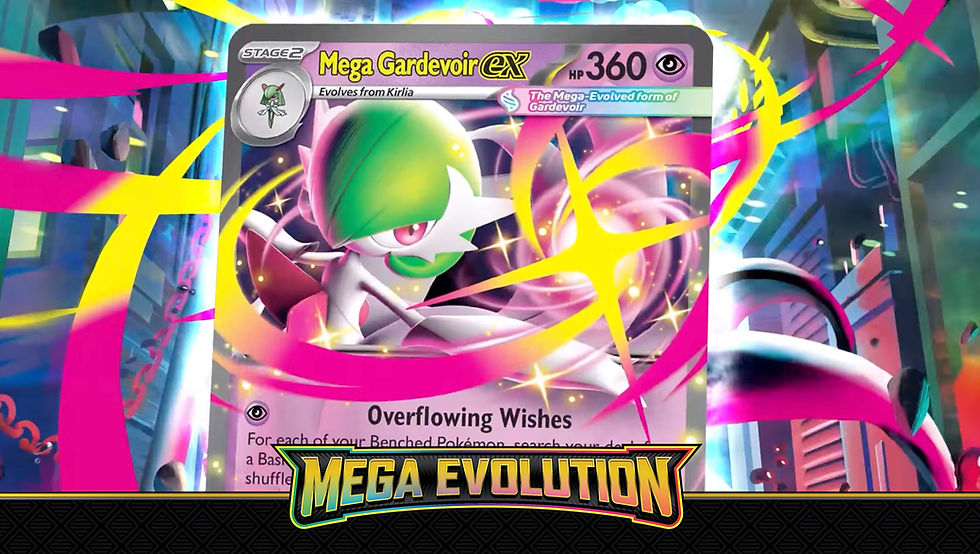Why Have Japanese Pokémon Cards Become So Expensive?
- Xavier Guerrez

- Sep 22
- 4 min read
Updated: Oct 2

Early this month, major Japanese anime merchandise companies like Good Smile Company, HobbyLink Japan, and Tokyo Otaku Mode have suspended shipments to the U.S. due to new U.S. regulations ending duty-free exemptions on low-value imports, which has also led Japan Post to halt its services to the U.S.This suspension is impacting access to popular anime merchandise and has led some retailers to pause orders or offer limited alternatives. But what about Pokémon cards? Amid the Pokémon craze we are experiencing - including Pokémon TCG Drops a Mega Charizard EX Bomb and a Whole New Rarity Tier - you may have noticed that Japanese sellers have drastically increased their prices, making it potentially more cost-effective to purchase your Japanese gems from overseas. But how have we reached this point? Is it due to market demand? Are sellers becoming greedy? Are stocks sold out or depleted?
Today, we want to explore the significant growth and fluctuations in the Japanese Pokémon card market over recent years. This market has been influenced by various economic factors, including currency exchange rates and inflation. Below is a detailed analysis of the market, including revenue data and the impact of economic conditions.
Revenue Overview
2019:
The Japanese Pokémon card market generated approximately ¥40 billion in revenue. This was a period of steady growth, with the market benefiting from new releases and the nostalgia factor driving demand among collectors.
2020:
Revenue surged to around ¥60 billion. The increase can be attributed to the global lockdown due to the COVID-19 pandemic, which led to a surge in hobby-related activities, including trading card games. The yen's relative stability against other major currencies also supported international demand.
2021:
The market reached a peak with revenues of about ¥80 billion. This year saw the release of highly anticipated sets and the continued impact of the lockdown, which kept demand high. The yen weakened slightly, but this did not significantly impact the market.
2022:
Revenue slightly declined to around ¥75 billion. This was influenced by the gradual lifting of lockdown measures and the normalization of economic activities. Inflation began to affect consumer spending, and the yen weakened further against the dollar, impacting international sales.
2023:
Estimated revenue stands at approximately ¥70 billion. Inflation rates have continued to rise, and the yen has weakened significantly against the dollar, reaching a 30-year low in October 2022. This has made Japanese Pokémon cards more expensive for international buyers, potentially affecting sales.
Economic Factors Impacting the Market
Currency Exchange Rates:
The weakening of the yen against the dollar and other major currencies has had a dual impact. On one hand, it makes Japanese Pokémon cards more expensive for international buyers, potentially reducing demand. On the other hand, it can make exports more profitable for Japanese sellers, although this benefit may be offset by increased costs due to inflation.
Inflation:
Japan's inflation rate has been rising, reaching levels not seen in decades. This has increased the cost of production for Pokémon cards, from printing to distribution. Higher prices may deter some consumers, particularly those who view the cards as a casual hobby rather than a collectible investment.
Economic Conditions:
Japan's economy has faced challenges, including recovery from the pandemic and global economic uncertainty. Despite these challenges, the Pokémon card market has remained resilient, buoyed by strong brand loyalty and the continuous release of new and exciting products.
Recent US tariffs:
Following the ongoing tariffs the US has imposed on Japanese goods, including removing the 'de minimis' exemption that provided tax relief on items under USD 800, many Japanese sellers are increasing their prices to cover the hefty tariff costs. Many sellers have stopped selling to the US, primarily due to platforms like eBay, which are taking significant advantage by adding additional fees and requiring resellers to pay the tariff in many Asian countries.
Additional Market Insights
Collector's Market: The secondary market for rare and vintage Pokémon cards has seen significant growth, driven by collectors and investors. High-profile auctions and sales have increased the perceived value of these cards, further fueling demand.
New Releases: The release of new sets and special editions continues to drive interest and sales. The Pokémon Company's strategy of regularly introducing new cards and themes helps maintain market momentum.
Digital Integration: The integration of Pokémon cards with digital platforms and games has also contributed to market growth. This includes features like online battles and digital card collections, which appeal to a broader audience.
Conclusion
The Japanese Pokémon card market has shown robust growth over recent years, though it has been impacted by economic factors such as currency fluctuations and inflation. While the market has faced challenges, particularly in 2022 and 2023, the strong brand loyalty and continuous introduction of new products have helped sustain demand. As economic conditions evolve, the market will likely continue to adapt, balancing the needs of domestic and international consumers.
Overall, there is growing interest from collectors in investing in the premium value of owning 'first print' and 'first edition' sets, as these have become extremely hard to find. Regardless of the card's condition, Japanese traders are leveraging this strong demand from the West to increase prices. Over the past year, Japanese TCG shops have experienced a significant increase in 'Pokémon tourism', including US resellers trying to find these grail items to avoid tariffs. Finally, the tariffs and the advantages that platforms like eBay seek from Japanese resellers have prompted further investment from Asian markets in Japanese Pokémon cards. This includes new branches and offices from grading companies like TCG in Hong Kong, among others, which are heavily taking the lead in a market that is increasingly re-centering itself within tariff-free zones.










































































Comments